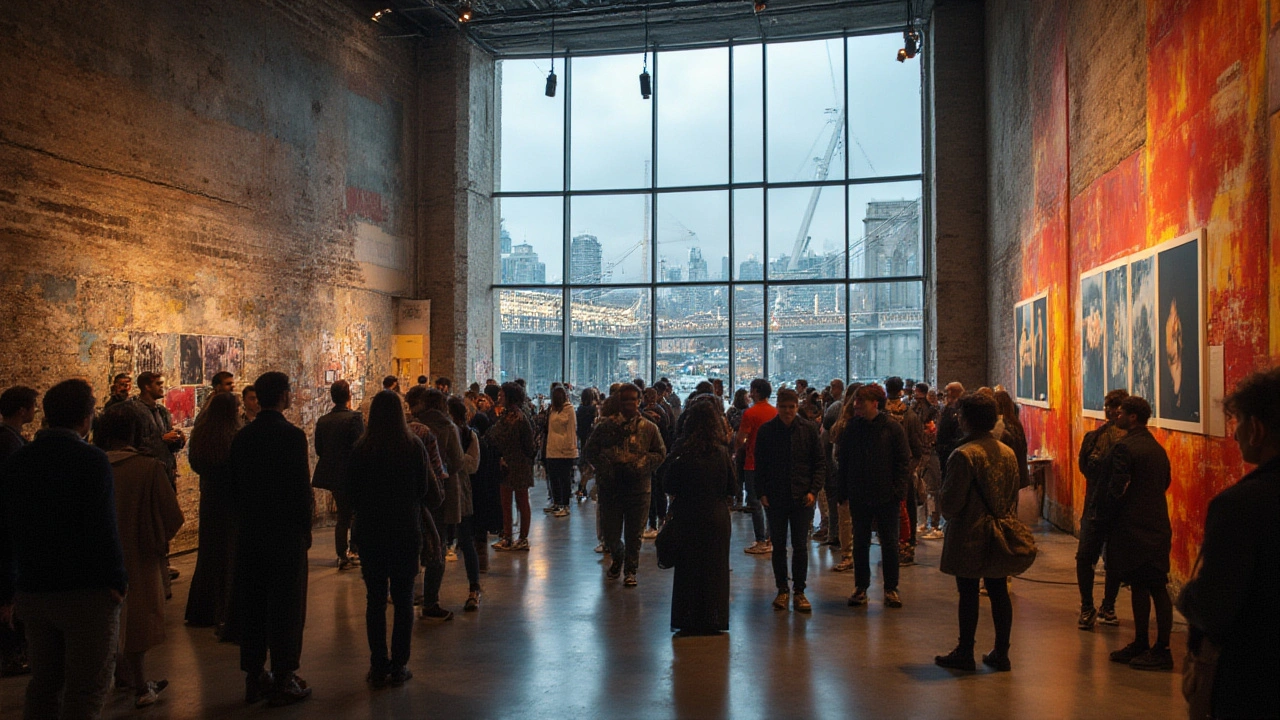Unveiling London's Most Inspiring Landmarks for Creative Minds

If you’re hunting for that bold spark that flips creative energy into overdrive, London is impossible to ignore. From the red double-decker buses to hidden street art, every inch of this city hums with stories. Instead of the usual selfies at Big Ben, imagine standing inside a landmark that changed music history or gazing up at a brutalist masterpiece that shaped the capital’s skyline. Whatever your passion—art, music, history, or design—there’s a site in London with its own pulse, just waiting to shake up your imagination.
Standing Tall: Icons That Changed Creative History
When you’re weaving your way through London’s streets, you can’t miss the landmarks that shaped the city. The Southbank Centre, for example, isn’t just a concrete giant; it’s a creative engine room. Built in the 1950s and expanded ever since, it hosts everything from poetry slams to international jazz—an annual footfall of over five million visitors shows its pull. The Royal Festival Hall, right in the heart of this complex, was turning out radical performances before Instagram and influencers ever existed. It welcomes you in for a classical symphony, a hip-hop festival, probably both in the same week. If you’re on a tight budget, dozens of events here are completely free—just wander in and see what’s cooking.
Then there’s the Barbican Centre—a brutalist favourite and the world’s largest performing arts centre under one roof. While some think its grey exterior is a bit much, creatives have a soft spot for its unapologetic design and its endless maze of galleries, secret gardens, and thought-provoking exhibitions. You can catch an indie Japanese film, lose yourself in an immersive art show, or soak up the sun by the secluded lakeside terrace. Locals come for the concerts; artists come for inspiration. It’s the kind of place that makes you want to grab a sketchbook even if you can’t draw.
If you’re more about open skies and historic vistas, St Paul’s Cathedral is a must. The dome isn’t just a postcard shot; it’s a work of genius by Sir Christopher Wren and one of London’s most recognisable silhouettes for over 300 years. Climb the 528 stairs up to the Golden Gallery—your reward is London’s best panoramic view. Many creatives swear the view alone is enough to break a mental block. If heights aren’t your thing, the Whispering Gallery’s weird acoustics will still make you feel like a Renaissance inventor.
Behind the Obvious: Secret Spaces and Offbeat Inspiration
Lesser-known spots sometimes serve up the friendliest, most unexpected creative fuel. Tucked just behind a Tottenham warehouse, God’s Own Junkyard glows with rainbow neon signs salvaged from decades of film sets and clubs. It’s free to enter (at least on weekends), and the mix of religion, pop culture, and wild colours draws everyone from students to set designers. There’s even a quirky on-site café so you can plan your next project surrounded by glowing signage and kitschy statues.
For a hit of organic oddness, the Horniman Museum & Gardens in Forest Hill is a playground for curious minds. Where else do you get a Victorian natural history collection, African instruments, and a butterfly house all side by side? If you’ve ever wanted to sketch a walrus or study the bones of extinct animals, this is the place. The surrounding gardens often host outdoor concerts and craft markets, so you might stumble across a drumming circle or a pop-up poetry reading.
Maltby Street Market in Bermondsey flips the usual hipster market scene on its head. Here, graffiti-covered railway arches hide food stalls, craft whisky bars, and one-of-a-kind art collectives. If you have an eye for industrial chic, this place is heaven—but it’s also a goldmine for creative people-watching, urban photography, or simply soaking up stories from the locals. Try chatting with the market traders for fresh tips about underground art events and local music nights you won’t find in any tourist guide.

Art That Never Sleeps: Murals, Galleries, and Creative Festivals
In London, the streets turn into open-air galleries the second you step outside. Shoreditch and Hackney Wick are where local and international artists battle for wall space. Just stroll around Brick Lane or spot the sprawling “Let’s Adore and Endure Each Other” mural off Great Eastern Street. Banksy’s unmistakable stencils might pop up, but so do plenty of unsigned marvels. Some of these works last for years, while others vanish overnight—so snap photos while you can.
If you’d rather get inside and see what’s next for art, The Tate Modern is non-negotiable. Not just because it owns works by Warhol, Rothko, and Yayoi Kusama, but because it sets out to challenge what a gallery can be. The Turbine Hall installations, often created by giants of the art world, get people talking for months. On a rainy London afternoon, nothing beats sitting by the window at Tate Modern’s café, watching boats bustle down the Thames, sketchbook in hand.
For those who crave hands-on inspiration, the London Design Festival, usually held every September, turns the entire city into a playground. Pop-up pavilions appear in Covent Garden; interactive exhibitions transform the V&A Museum into a creative playground. In 2024, nearly 350,000 people joined the festival—proof that London’s appetite for the new stays massive. Check out the installations along the South Bank or sign up for a last-minute workshop; you never know which emerging designer will end up shaping next year’s trends.
Tips to Truly Experience London’s Most Inspiring Landmarks
Getting the most out of London’s creative heart isn’t about ticking boxes—it’s about exploring in a way that’s genuinely you. Tube it to Tower Hill early before the crowds, then walk over the Millennium Bridge for a surreal sunrise stroll towards St Paul’s. Pick a weekday if you fancy a quieter vibe at the Barbican—locals say Wednesday mornings are the ideal window, with just enough buzz to keep things interesting. If you want to catch festival action or large exhibitions, always check official websites and book a few weeks ahead as ticket demand can be unpredictable.
London’s odd weather means you’ll want to bring layers—a sudden downpour can turn an open-air art hunt into a mad dash for cover, but it’s all part of the experience. Street food is a way of life here; instead of pricey chain restaurants, hunt for new pop-up food stalls in Borough Market or along Southbank. You meet more locals at a neon-lit table with a bao bun than in any formal dining room.
Stay updated with local apps like Time Out London or the Londonist for last-minute exhibitions, secret screenings, or hidden gigs. Many venues—like the Tate, Barbican, and Southbank Centre—offer ‘late night’ openings, so you can explore installations or catch performances without the weekend rush. Remember, some landmarks run free artist workshops or talks—grab these chances when you can.
Here’s a quick snapshot of London landmarks with their creative highlights:
| Landmark | Known For | Best Time to Visit |
|---|---|---|
| Southbank Centre | Multi-discipline arts, festivals, free events | Weekdays after 11am |
| Barbican Centre | Brutalist architecture, oddball gigs, immersive art | Early weekdays |
| Tate Modern | Contemporary exhibitions, stunning river views | Lunchtime or evenings |
| St Paul’s Cathedral | Architectural wonder, skyline views | Morning for fewer crowds |
| God's Own Junkyard | Neon art, film history, photography | Weekends (check opening times) |
There’s no formula—just throw yourself into London’s tangle of sights, sounds, and textures. The city has a knack for throwing surprises your way when you least expect them. Whether you’re sketching on the steps of the Tate or swapping music tips outside a market arch, London’s landmarks have a way of making everyone feel like part of one big, wild studio.